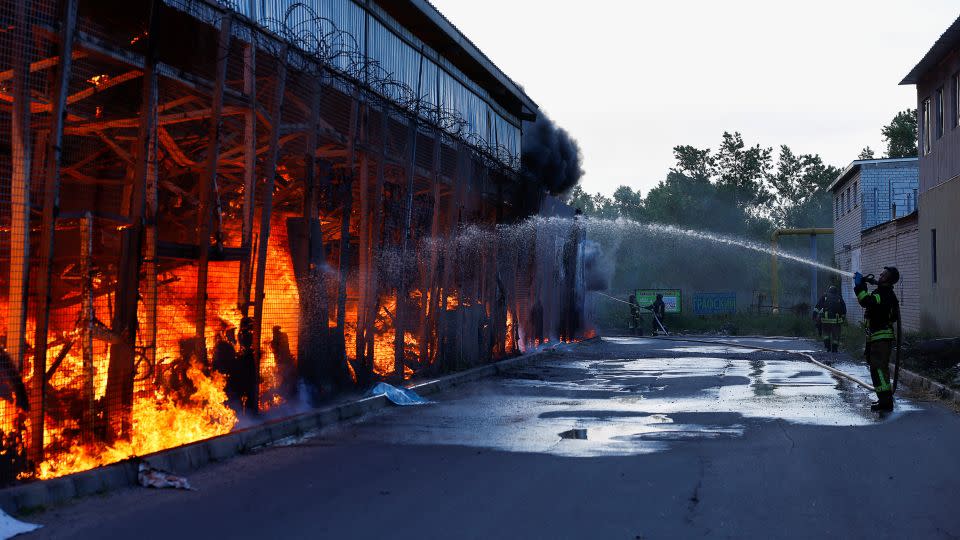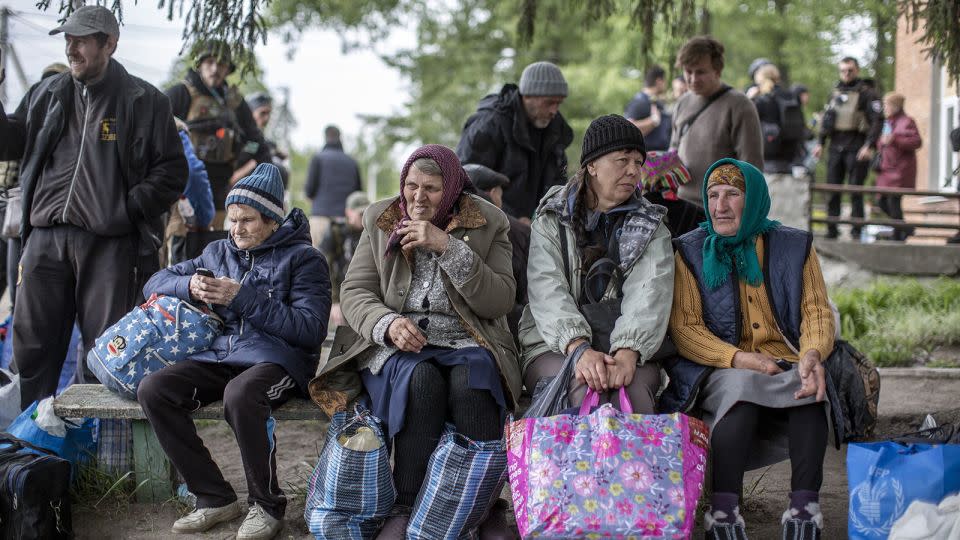The US allows Ukraine to use its weapons to strike inside Russia, but it is unlikely to be a game-changer
The story of the past 27 months since Russia invaded Ukraine has been one of crumbling taboos. After repelling Russia’s initial march on Kyiv, Ukraine has asked its Western allies for greater and greater support: first ammunition, then tanks, then cluster munitions, then fighter jets.
Each time, the West has agonized over whether to grant Kyiv’s latest request, fearing escalation and a potential Russian response. Each time, the taboo was broken – and nothing happened. What seemed beyond the pale one week had become banal the next.
But the rhythm of deliberation and delay has been hard to shake. Despite securing more weapons from the United States last month, Ukraine has not been able to use them as it pleases. As Moscow this month launched its surprise assault on the northeastern Kharkiv region, Washington forbade Kyiv from using US weapons to strike targets inside Russia.
This too crumbled. President Joe Biden this week gave Ukraine permission to carry out limited strikes using US weapons in Russian territory around Kharkiv, after several European nations had removed restrictions on how the weapons they have given to Kyiv can be used.
“Over the past few weeks, Ukraine came to us and asked for the authorization to use weapons that were provided to defend against this aggression” near Kharkiv city, “including against Russian forces that are massing on the Russian side of the border,” US Secretary of State Antony Blinken said Friday on a visit to Prague, the Czech capital. He confirmed Biden had approved Ukraine’s request.
Ukrainian President Volodymyr Zelensky praised the decision as a “step forward” which will help his forces to defend the embattled Kharkiv region.
While the decision may mark a new phase of the war, analysts have questioned whether the new freedoms will significantly bolster Ukraine’s ability to repel Russia’s invasion.
Some are bullish. This month, the calls for the US to remove the restrictions became more desperate, as Russia continue to pummel Kharkiv city with missiles and make gains elsewhere in the region.

In a CNN op-ed, Adam Kinzinger and Ben Hodges described the bizarre effect of the US taboo: “We have heard Ukrainian soldiers repeatedly tell stories of Russian columns attacking, being repelled, and retreating to safe Russian territory to regroup, have a hot meal, plan and attack again.”
“Ukraine cannot win if Russians can attack civilian targets with impunity and call ‘time out’ in their own territory,” they wrote, urging Biden to call his Russian counterpart Vladimir Putin’s bluff.
But military analysts have tempered expectations, partly because the US is standing firm in not allowing Ukraine to use the most formidable munition it has been given to fire into Russia: the long-range missiles known as ATACMS that can hit targets 300 kilometers (nearly 200 miles) away.
Instead, Ukraine can only use shorter-range missiles known as GMLRS, which have a range of around 70 kilometers (around 40 miles).
Kateryna Stepanenko, an analyst at the Institute for the Study of War in Washington, told CNN the policy change will “blunt” Russia’s offensive in Kharkiv, but still “preserves the majority of Russia’s sanctuary space.”
“The policy still protects Russia’s operational and deep rear sufficiently that this change near Kharkiv Oblast is insufficient to bring about a turning point in the war. Ukraine particularly needs the capacity to strike deep rear areas to defeat the Russian ground and air threats, as many Russian airfields that support strikes against Ukrainian cities are located outside of the allowed GMLRS range,” she said.

Franz-Stefan Gady, an associate fellow at the International Institute for Strategic Studies, told CNN the GMLRS cross-border strikes will allow Ukraine “to hit some Russian staging areas, command and control centers, as well as supply depots. It will not stop but complicate Russian military operations against Kharkhiv.”
“We need to be realistic about what can be expected from this policy change, since the Russian armed forces have already adapted to the introduction of ground-based precision fires,” he said.
Mathieu Boulegue, a researcher at the Center for European Policy Analysis, said the policy change would allow Ukraine to “be more efficient when it comes to repelling attacks and pushing back preemptively.”
“It’s not a game changer, per se. It’s an add-on, a steroid, an extra booster for Ukraine to defend itself,” he said.
Red lines fade
The US is joining the United Kingdom, France, Germany and several others in removing restrictions on how Ukraine uses the weapons it is given.
Before Biden gave the green light, Putin had made veiled nuclear threats to countries considering allowing Ukraine to strike Russia with their weapons. He warned the move could lead to “serious consequences,” particularly for “small and densely populated countries.”
As well as making nuclear threats, Putin also signaled earlier this month that he was open to peace talks.
“All of these false narratives deliberately aimed to discourage Western decisionmakers from allowing Ukraine to preempt Russia’s attack on Kharkiv city,” Stepanenko said.
While the removal of this taboo appears to mark a new chapter in the war, Russia has previously experienced Ukrainian strikes with Western weapons on territory it considers its own.
Ukraine has frequently targeted occupied Crimea, which Russia annexed in 2014, using “Storm Shadow” missiles provided by the UK.
Ukraine also launched strikes on Kharkiv and Kherson in late 2022, as it sought to liberate the regions occupied by Russia in the early weeks of the full-scale invasion.
In both cases, Russia had warned Ukraine and its Western allies not to cross its red line. In both cases, Ukraine and its Western allies ignored the warning.
“The Kremlin already regards strikes against occupied Crimea and Donetsk, Luhansk, Kherson, and Zaporizhia oblasts as ‘strikes against Russia,’ but the reality is that there are few things that Russia can do to further escalate its war in Ukraine without incurring major risks,” Stepanenko said.
CNN’s Alex Marquardt, Jennifer Hansler, Kylie Atwood, Niamh Kennedy and Anna Chernova contributed reporting.
For more CNN news and newsletters create an account at CNN.com


